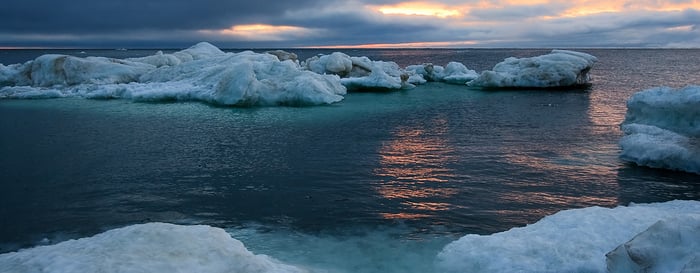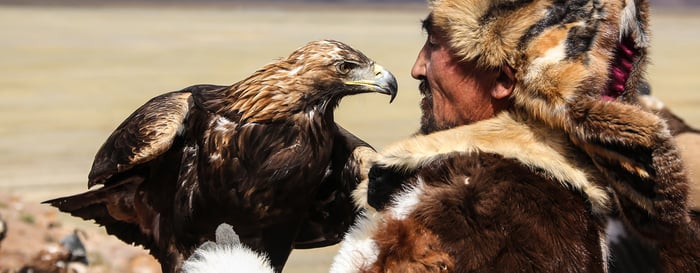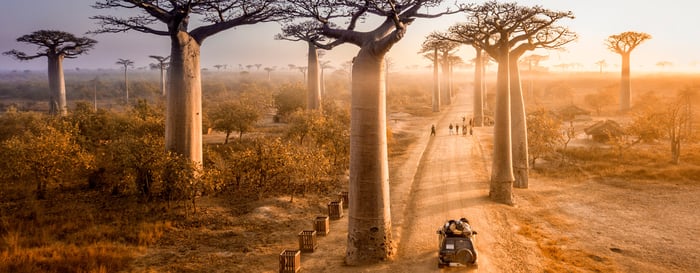
It was snowing for one. That morning I’d woken up early, donned at least four layers, and bravely ventured outside. It was freezing despite it being well into spring, but the view around me was enough to make me forget about the sharp ache in my hands. The sun was peeping through the clouds – it’s fierce glow only dulled by the milky-coloured sky filled with falling snowflakes. Underfoot, my shoes squelched with glee as I crisscrossed the maze of raised walkways that linked each of EcoCamp’s domed rooms, my home for three nights. The air was broken only by the chirping and rustling of nearby birds.
¨It’s not actually that hard to spot pumas, especially in winter,¨ said today’s guide Henry, over the breakfast buffet, ¨but every time I see one it is something special. There is something special about seeing something as powerful as that, in a place as powerful as this.¨
EcoCamp is a fully sustainable hotel located in the heart of the Park. What sets it apart is not the quality of its food or its picturesque setting, but the dedication of guides like Henry, who is so passionate about nature and conservation that he lives half the year in incredibly isolated and unpredictable conditions. For him, educating guests about responsible tourism and protecting the integrity of this 1,814 km² national park is a life’s passion (a cause that takes on new meaning when you realise that a fifth of its size has been lost accidentally due to man-made fires).

We head out into the flat barren hills known as the Patagonian pampa, to meet the guanaco, a wild camelid that just so happens to be the puma’s favourite meal.
Henry explains that this is not a trek where we should hurry, but we should walk at a slow pace and keep our eyes peeled for any sign of unusual activity. At one point, as our boots are immersed in mud, he lets out a squeal of joy.
¨I don’t know if poop is something that you find interesting, but you can learn so much from it. Look at this!¨ He exclaims and straddles both sides of the trail to protect the treasure between his feet. ¨You can see by looking what it is in it whether the animal was carnivore or herbivore. Look at the colour – it’s still fresh!¨
No, it isn’t puma poop, but his enthusiasm is so infectious that we all take a good look and join in with a flurry of enthusiastic nodding..
Suddenly he raises his hand and signals for us to be quiet – there! In the near distance, a tiny head is bobbing, only just discernable against the wind-swept land. It’s a grey fox, and it is running slowly towards something. It backtracks, advances, steps sideways, then advances once more. The object of its attention is soon very apparent – to the right is a guanaco corpse, its fur mottled with brilliant streaks of red.
¨In all my years as a guide, I have never seen a fresh kill!¨ Henry exclaims, his hands beneath his chin as he watches the fox approach the body, ¨This guanaco has only just been killed by a puma, so the fox has to be careful – pumas never go too far from their kill.¨
The fox is hesitant. So hesitant, in fact, that 15 minutes later his cautious dance is still continuing. This moment is too precious to pass up, so we buckle down and wait. The snow from the morning had long given way to blue sky but now begins to snow again. This is the reality of Patagonia – you can expect all four seasons in a single hour. The moment is completely magical.

¨Pumas live all over North and South America, from Canada right down to Chile. They are normally hard to spot – that’s why they’re called ‘shadow cats’. But here in Patagonia, these cats don’t have any other competition – they are at the very top of the food chain and everything depends on them,¨ Henry tells us as we lay in wait, ¨They kills things like the guanaco and sheep, and tear off the meat that birds like the condor can’t pick off. When they’ve finished, it’s time for the foxes and the birds of prey to take all the rest¨.
It is while we are on the ground, with our teeth clattering and limbs shivering, that it happens. On the hill ahead, completely illuminated by the sun, the object of our quest finally appears – a puma. At that moment, adrenaline begins to course through my body and I become completely disorientated, as if I finally understand my place in the food chain.My past memories swell, converge, and disperse in that second – none of it matters. There’s only this place, the puma, and I, two living beings being pounded by the wind and snow brought forth by the volatile clouds of Patagonia.
The fox, meanwhile, gives up. I guess guanaco was just not to be on the menu today.
Photography: Timothy Dhalleine
Arctic Wildlife Safari
- Search for polar bears hunting seals in the pack ice on an arctic safari
- Explore historical sites including early whaling camps, trappers’ cabins, deserted coal mining operations, and an abandoned polar research station
- Sea kayaking near tidewater glaciers and icebergs
- Look out for humpback whales from the outdoor decks
- Take advantage of the included photography program and learn alongside the onboard expert
Mongolia’s Eagle Hunting Festival
Ulaanbaatar & Central Heartland
- Living alongside a nomadic eagle hunting family and learning about their age-old traditions and ways of life
- Attending the annual Ulgii Eagle Hunting Festival and getting caught up in the excitement of this event which locals spend their lives training for
- Experiencing a less mainstream part of the country and really getting off the beaten track
The Parks of Madagascar
- Experience Madagascar’s unique wildlife, including lemurs
- Marvel at the UNESCO-listed limestone peaks in the Tsingy de Bemaraha National Park
- Witness sunset at the famous Avenue of the Baobabs
- Spot rare, endemic bird species including Appert’s greenbul, found only in the Zombitse National Park





